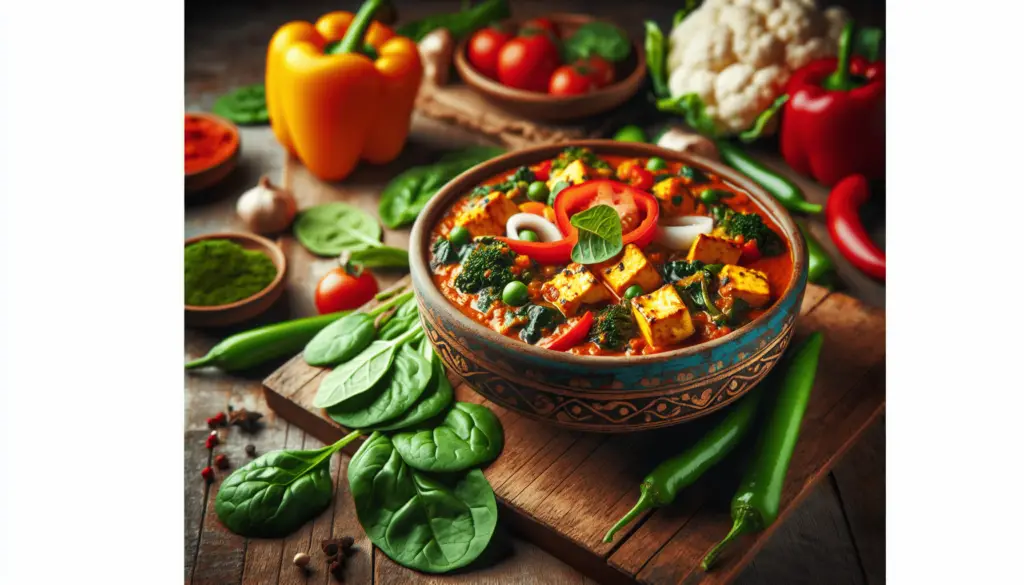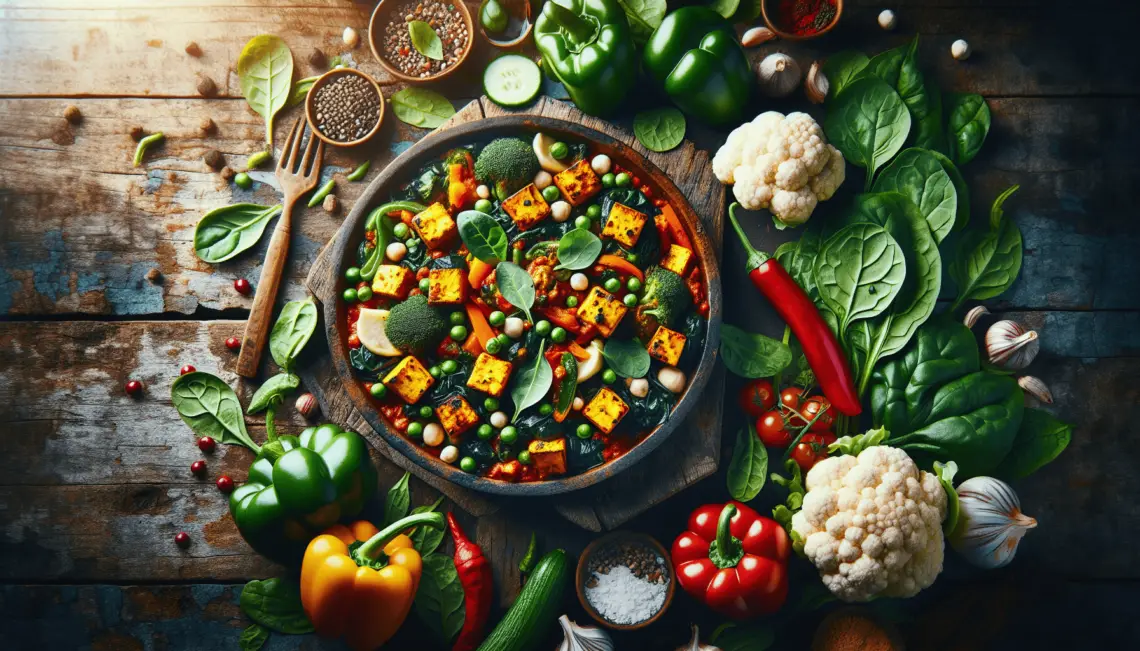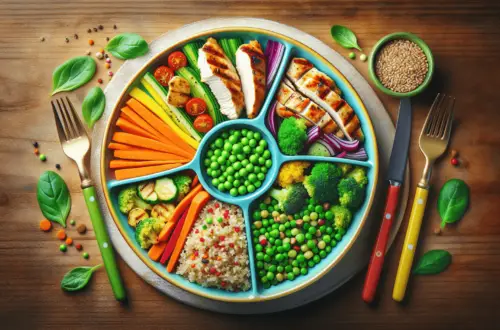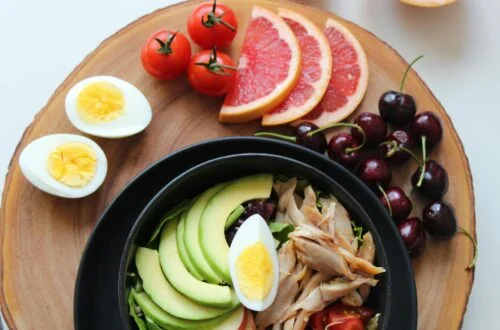Welcome to a delightful exploration of blending rich, traditional Indian vegetarian cuisine with the low-carb principles of the Atkins diet. In this article, you’ll discover creative ways to enjoy your favorite Indian dishes while staying committed to your dietary goals. From rethinking ingredients to tweaking cooking techniques, you’ll learn how to savor the familiar flavors of home without the added carbohydrates. Get ready for a flavorful journey that marries the best of Indian culinary traditions with the health-conscious choices of the Atkins lifestyle.
How Can Traditional Indian Vegetarian Dishes Be Modified To Fit The Atkins Diet?
Have you ever wondered how you can maintain the flavors of your beloved traditional Indian vegetarian dishes while adhering to the low-carbohydrate principles of the Atkins diet? Most people assume that a balance is nearly impossible because Indian cuisine often relies heavily on ingredients that are high in carbs. But fear not! By making a few strategic modifications, you can enjoy Indian dishes that are both delicious and compliant with the Atkins diet.
Understanding the Atkins Diet
Before diving into the modifications, let’s briefly understand what the Atkins diet is all about. The Atkins diet is a low-carbohydrate eating plan that emphasizes protein and fats while reducing carbs to achieve weight loss and overall health improvements.
Phases of the Atkins Diet
The Atkins diet is divided into four phases, each with its own set of guidelines regarding carb intake:
- Induction Phase: Limits carbs to 20-25 grams per day, primarily from vegetables.
- Balancing Phase: Gradually increases carbs by 5 grams per week, allowing for more vegetables and nuts.
- Pre-Maintenance Phase: Further increases carbs by 10 grams per week, as long as weight loss is maintained.
- Lifetime Maintenance Phase: Focuses on maintaining the desired weight by balancing carb intake with what is sustainable for you.
Core Principles of the Atkins Diet
- Low Carbs: Focus on reducing carbohydrate intake.
- High Protein: Emphasize protein-rich foods.
- Healthy Fats: Consuming fats from good sources like avocados, nuts, and olive oil.
Key Ingredients in Indian Vegetarian Cuisine
A typical Indian vegetarian meal commonly includes grains, legumes, vegetables, spices, and dairy products. Some of these, especially the grains and legumes, are high in carbohydrates. Let’s break down these common ingredients to see which ones align with the Atkins diet and which ones require modification.
Grains and Legumes
- Rice: High in carbs.
- Lentils and Chickpeas: Quite high in carbs but excellent sources of protein.
Vegetables
- Potatoes: High in carbs.
- Cauliflower, Spinach, Broccoli: Low in carbs and suitable for Atkins.
Dairy
- Paneer (Indian Cottage Cheese): High in protein and fat, low in carbs.
- Yogurt: Can be high in carbs depending on the variety.
Spices and Herbs
Spices and herbs such as turmeric, cumin, coriander, and cilantro are inherently low in carbs and can be used freely.
Modifying Indian Vegetarian Dishes
Now, let’s delve deeper into how you can modify several traditional Indian vegetarian dishes to fit into the Atkins diet.
1. Vegetable Curry
A traditional vegetable curry often includes potatoes and peas, which are high in carbohydrates. To make it Atkins-friendly:
Ingredients to Substitute:
- Replace Potatoes: Use cauliflower florets.
- Replace Peas: Use green beans or snap peas in limited quantities.
Here’s a modified vegetable curry recipe:
Modified Recipe:
1 cup cauliflower florets 1 cup green beans, chopped 1 bell pepper, diced 1 cup spinach leaves 1 tablespoon olive oil 1 teaspoon cumin seeds 1 teaspoon turmeric powder 1 teaspoon garam masala 1 teaspoon coriander powder 1 cup coconut milk Salt to taste Cilantro for garnish
- Heat olive oil in a pan and add cumin seeds.
- Add the bell pepper and sauté for 2-3 minutes.
- Add green beans and cauliflower florets, and cook until tender.
- Stir in the spinach leaves.
- Mix in the turmeric powder, garam masala, and coriander powder.
- Pour in the coconut milk and let it simmer for 10-15 minutes.
- Season with salt and garnish with cilantro.
2. Dal Tadka
Traditional Dal Tadka is usually made from toor dal (split pigeon peas), which is high in carbohydrates. Instead, consider using moong dal (split green gram), which has a lower carb count.
Ingredients to Substitute:
- Replace Toor Dal: Use moong dal.
Modified Recipe:
1 cup moong dal 4 cups water 1 tablespoon ghee or butter 1 teaspoon cumin seeds 1 teaspoon mustard seeds 1 onion, finely chopped 2 cloves garlic, minced 1 inch ginger, grated 2 green chilies, chopped 1 teaspoon turmeric powder 1 teaspoon coriander powder Salt to taste Cilantro for garnish
- Cook moong dal with water until soft.
- In another pan, heat ghee and add cumin and mustard seeds.
- Add the chopped onions, garlic, ginger, and green chilies. Sauté until golden brown.
- Mix in the turmeric and coriander powder.
- Combine the cooked dal with the sautéed mixture.
- Simmer for 5-10 minutes and season with salt.
- Garnish with cilantro.
3. Palak Paneer
Palak Paneer is a dish made from spinach and paneer. It’s pretty close to the Atkins principles, but it’s crucial to avoid excessive use of creamy base sauces and adjust the cooking method slightly.
Ingredients to Include:
- Paneer: Already an excellent source of protein and low carbs.
- Spinach: Perfectly fits the Atkins diet.
Modified Recipe:
2 cups fresh spinach leaves 1 cup paneer cubes 1 large tomato, puréed 1 onion, finely chopped 2 cloves garlic, minced 1 inch ginger, grated 1 tablespoon olive oil 1 teaspoon cumin seeds Salt to taste Cilantro for garnish
- Blanch the spinach leaves and purée them.
- Heat olive oil in a pan and add cumin seeds.
- Sauté the onions, garlic, and ginger until golden brown.
- Add the tomato purée and cook for 5 minutes.
- Mix in the spinach purée.
- Add the paneer cubes and simmer for 10 minutes.
- Season with salt and garnish with cilantro.
4. Cauliflower “Rice”
White rice is a staple in many Indian meals but is high in carbs. Cauliflower rice is a fantastic low-carb substitute.
Ingredients to Substitute:
- White Rice: Replace with grated cauliflower.
Modified Recipe:
1 head cauliflower, grated 1 tablespoon olive oil 1 teaspoon cumin seeds 1 onion, finely chopped 2 green chilies, chopped Salt to taste Cilantro for garnish
- Heat olive oil in a pan and add cumin seeds.
- Sauté the onions and green chilies until golden brown.
- Add the grated cauliflower and cook for 5-7 minutes.
- Season with salt and garnish with cilantro.
5. Low-Carb Chutney
Many Indian meals include chutneys, which are often sweetened with sugar or high-carb fruits. You can make a delicious low-carb chutney by using keto-friendly ingredients.
Ingredients to Substitute:
- High-Carb Fruits: Replace with low-carb options like green tomatoes or avocados.
Modified Recipe:
1 cup green tomatoes, chopped 1 avocado, peeled and chopped 1 small onion, finely chopped 1 tablespoon lemon juice 1 green chili, chopped 1 teaspoon cumin seeds Salt to taste Cilantro for garnish
- Mix all ingredients in a blender until smooth.
- Season with salt and garnish with cilantro.
6. Achari Broccoli
Achari dishes are loved for their robust pickle flavors. Achari aloo (potato) is popular but not Atkins-friendly. Replace potatoes with broccoli to make it a low-carb delight.
Ingredients to Substitute:
- Potatoes: Use broccoli florets.
Modified Recipe:
2 cups broccoli florets 1 tablespoon mustard oil 1 teaspoon mustard seeds 1 teaspoon fennel seeds 1 teaspoon nigella seeds 1 teaspoon cumin seeds 1 teaspoon turmeric powder 1 teaspoon red chili powder 1 teaspoon coriander powder 1 small onion, finely chopped 1 tablespoon lemon juice Salt to taste
- Heat mustard oil in a pan and add mustard seeds, fennel seeds, nigella seeds, and cumin seeds.
- Sauté the onion until golden brown.
- Add the broccoli florets and cook until tender.
- Mix in the turmeric powder, red chili powder, and coriander powder.
- Cook for another 5-7 minutes.
- Add the lemon juice and season with salt.
Nutritional Comparison and Guidelines
To make the transition smoother, here’s a comparison table of traditional and modified ingredients showcasing their carb content:
| Traditional Ingredient | Carb Content (per 100g) | Modified Ingredient | Carb Content (per 100g) |
|---|---|---|---|
| White Rice | 28g | Cauliflower Rice | 5g |
| Potatoes | 17g | Cauliflower Florets | 5g |
| Toor Dal | 26g | Moong Dal | 19g |
| Peas | 14g | Green Beans | 7g |
By making these substitutions, you’ll lower the carbohydrate content of your meals significantly, allowing them to fit within the guidelines of the Atkins diet.

Practical Tips for Modifying Indian Dishes
Experiment with Spices
Indian cuisine is rich in spices, which are naturally low in carbs. Focus on experimenting with different spices to keep your dishes flavorful without adding carbs.
Use Healthy Fats
Ghee, coconut oil, and olive oil are great sources of healthy fats that can be used in cooking to replace vegetable oils that may not be as beneficial.
Monitor Portion Sizes
Even with low-carb substitutes, moderation is key. Keep an eye on your portion sizes to ensure you’re staying within your daily carb limits.
Conclusion
Adapting traditional Indian vegetarian dishes to fit the Atkins diet requires some creative substitutions, but it’s definitely possible without compromising on taste. By focusing on low-carb vegetables, healthy fats, and retaining the rich flavors through spices, you can enjoy a variety of dishes that align with your dietary goals. Give it a try and enjoy the best of both worlds!





